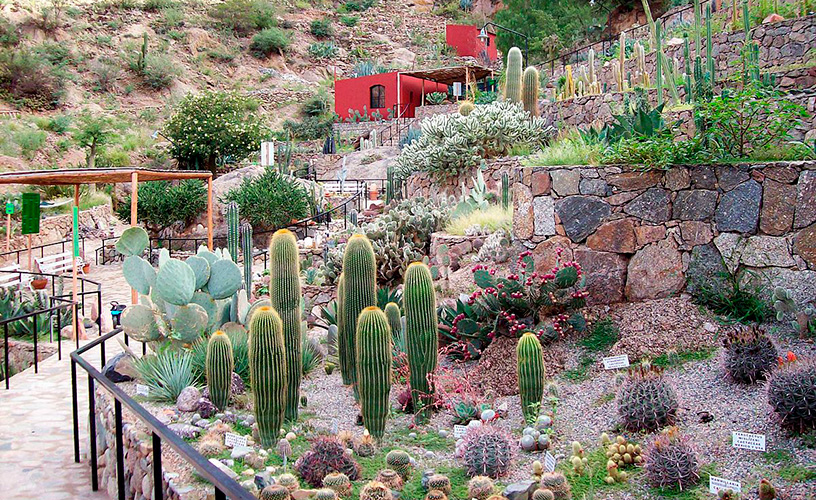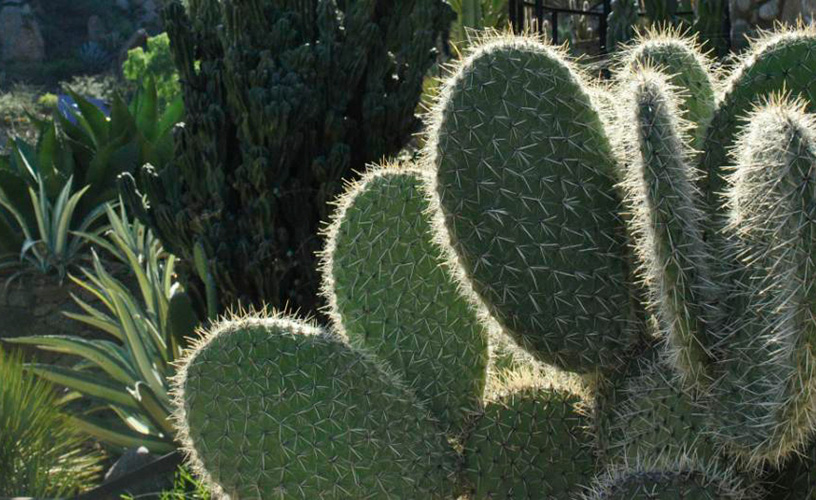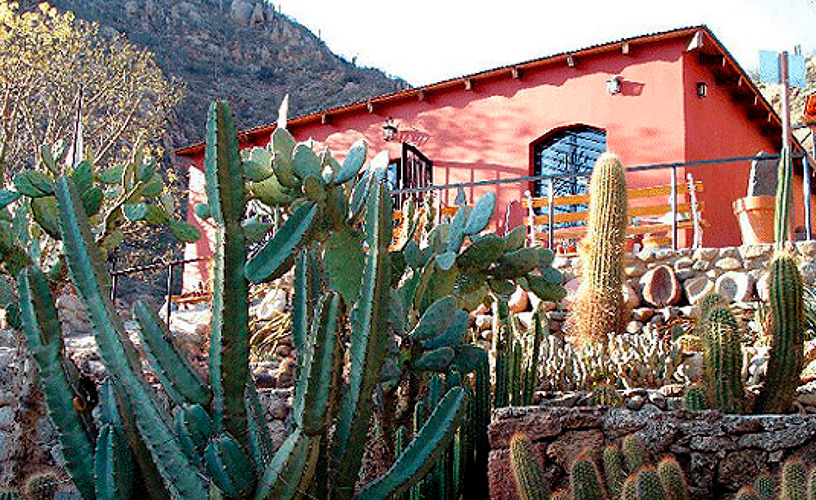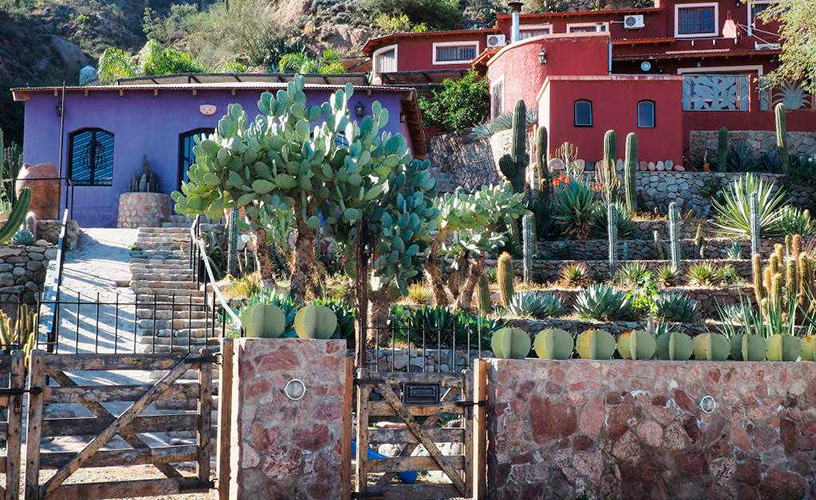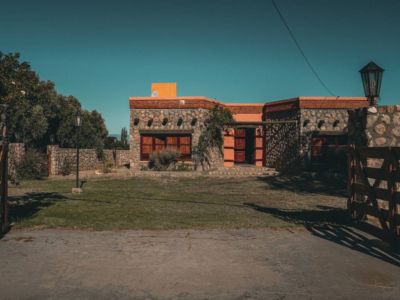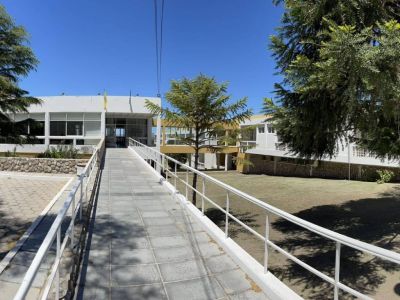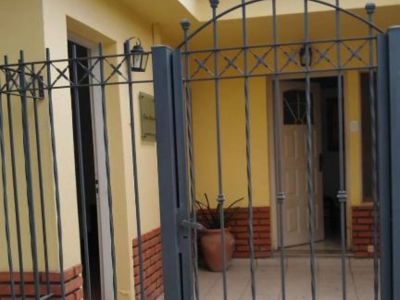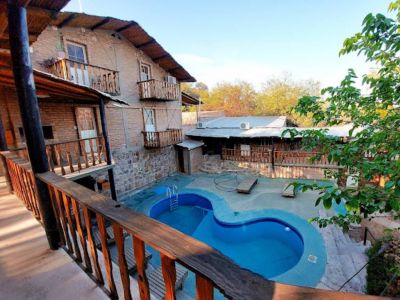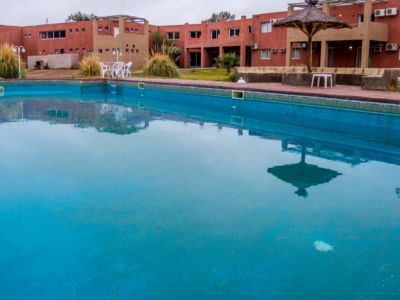More than 60 genres of native cactus from
La Rioja and hundreds of specimens from Mexico, Cuba, the Galápagos Islands and Brazil are concentrated in a two-hectare venue, which turn this cactus museum into the most important entity in its kind in Latin America.
From the city of Chilecito, on the way to the district of La Puntilla, we ascend along a winding road parallel to the El Paimán mountain range, immersed in some mountains without any vegetation, except for some small jarilla bushes that grow among the rocks. Suddenly, after a bend, the cardons appear on the mountain –those giant cactuses that rise to the sky like accusing fingers. The cactuses announce that we have reached the Chirau Mita botanic garden. In the middle of a small ravine, a steep rock staircase goes up the mountain slope where the cactuses form a crowd that seems to go down the mount as in a peregrination.
Seen from beneath, the cactus field resembles a complex labyrinth of grids that spread without further symmetry over the mount just like terraces of Incan crops. In each of the platforms, there are hundreds of plants that survive the inhospitable aridity of the Andean world, where the sun heats the atmosphere without mercy.
As we reach the top of the mountain, we can see the city of Chilecito with the bell tower of the Santa Rita de Casia church standing out among the roofs of the houses, the Cuesta de Miranda and, in the distance, the snow-capped mountains of the Famatina range.
The Cactus Field
The Chirau Mita cactus museum is simple, didactic and very valuable from the point of view of ecology. Collectors from all round the world would give anything to have in their nurseries some of the plants exhibited in this place. Almost nobody knows that in the outskirts of Chilecito there is a botanic garden unique in Latin America with more than 1,200 species of plants.
Patricia Granillo is the creator of the museum and she has collected cactus since her childhood. She has a special gift for growing these plants which she proudly exhibits as the fruit of fifteen years of work. All the plants in the museum have germinated from the seeds that Patricia herself planted and they grew up thanks to her careful dedication, as each of them requires a certain amount of light and humidity, according to the species. In addition to the cactus and the cardons, this singular botanic garden is formed by other tree and plant genres corresponding to dry environments, called succulent plants, such as the aloe vera and the American aloe.
The Tour
The owner of the botanic garden herself leads the visit through the place and explains to us that cactuses are plants from the American continent and that they do not exist in the wild anywhere else in the world. In turn, each country of America has its own species, as their habitats are relatively small.
Going up a little bit along the footbridges, we find the Brazil, Cuba and La Rioja cactuses, which co-exist in the same piece of land. The guide explains that the shape of these plants, mostly cylindrical, aims to contain water, whereas their green color responds to the chlorophyl they possess all through their body in order to carry out the process of photosynthesis, limiting their branches to only one stem. Their hostile appearance due to the thorns is nothing but the feature they had to develop in order to survive in desert climates. Their thorns are equivalent to the tree leaves and adopt such shape in order to protect the plant and prevent humidity from evaporating, just like it occurs with the regular plant leaves. Most cactuses live in arid lands, and that is why their roots, instead of growing deep, spread parallel to the ground, almost level with the surface. This allows them to immediately absorb the water from the rain and the dew.
The Cactus
Not only do the cactuses in this museum dazzle visitors with their beauty but also with the originality of their shapes, colors and sizes. They range from very small sizes, with only two centimeters of diameter and from our province, to giant cardons that generally dwell the high country. When going on this guided visit across the garden, we take an idea of the various adaptations made by these plants to survive their natural habitats.
One of the cactuses that catches our attention is the so-called elephant ear. This is a species of cactus without thorns that has folded fleshy leaves on its top resembling elephant ears. These leaves have some small fibers on their surface which spread out when touched producing light pains in people’s noses and eyes. This is the defense of the cactus against predators. Another singular cactus is the Oreocereus Celsianus, a species of about eighty centimeters which has developed fiber hairs between its thorns. This fur that covers its entire surface functions as a filter for the sunbeams and creates a kind of microclimate around the plant in order to protect it from the extreme temperatures of the Andes. There is also a kind of small tree with fleshy leaves but with cactus body, original from Brazil, whose shape is a mixture between a tree and a cactus.
The garden and its visitors
Ever since it opened its doors in December, 2003, the botanic garden Chirau Mita was visited by over six thousand tourists coming from various parts of the country and the world. But the owner’s favorites are the groups of school students from Chilecito. According to Patricia, the main objective of her museum is to educate and spread the idea of conservation of the plants which, whether giant or tiny, purify each cubic millimeter of the air we breathe.
Sandra Bonetto
Pablo Etchevers
Phone: +54 3825-424531
